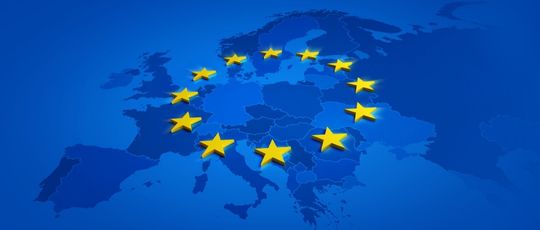Twitter Inc. was hit with a lawsuit on Wednesday accusing it of refusing to pay at least $500 million in promised severance to thousands of employees who were laid off after Elon Musk acquired the company, Reuters reports.
Courtney McMillian, who oversaw Twitter's employee benefits programs as its head of total rewards before she was laid off in January, filed the proposed class action in San Francisco federal court.
McMillian claims that under a severance plan created by Twitter in 2019, most workers were promised two months of their base pay plus one week of pay for each full year of service if they were laid off. Senior employees such as McMillian were owed six months of base pay, according to the lawsuit.
But Twitter only gave laid-off workers at most one month of severance pay, and many of them did not receive anything, McMillian claims.
Twitter laid off more than half of its workforce as a cost-cutting measure after Musk acquired the company in October.
The lawsuit accuses Twitter and Musk of violating a federal law regulating employee benefit plans. Twitter has already been sued for allegedly failing to pay severance, but those cases involve breach of contract claims and not the benefits law. The company has said it has paid ex-employees in full.
A pending lawsuit filed last month accuses Twitter of also failing to pay millions of dollars in bonuses it owes to remaining employees. Twitter has said the claims lack merit.
The company is also facing a series of other lawsuits stemming from the layoffs that began last year, including claims that it targeted women and workers with disabilities. Twitter has denied wrongdoing in the cases in which it has filed responses.
Judge Denies FTC’s Block of Microsoft’s Activision Blizzard Acquisition
A federal judge in San Francisco has denied the Federal Trade Commission’s motion for a preliminary injunction to stop Microsoft from completing its acquisition of video game publisher Activision Blizzard, NBC News reports.
The FTC filed a notice in court on Wednesday to appeal the ruling that would allow Microsoft to move forward with its $69 billion acquisition of Activision Blizzard.
“This Court’s responsibility in this case is narrow. It is to decide if, notwithstanding these current circumstances, the merger should be halted — perhaps even terminated — pending resolution of the FTC administrative action,” Judge Jacqueline Scott Corley wrote in her decision, published on Tuesday. “For the reasons explained, the Court finds the FTC has not shown a likelihood it will prevail on its claim this particular vertical merger in this specific industry may substantially lessen competition. To the contrary, the record evidence points to more consumer access to Call of Duty and other Activision content. The motion for a preliminary injunction is therefore DENIED.”
The FTC argued Microsoft has shown an interest in making some games exclusive, to prevent them from appearing on Sony’s PlayStation or Nintendo’s Switch, and that it might do so if the deal were to close.
But Microsoft said the company would want to make Activision’s titles more widely available, rather than less, partly to grow from people subscribing to its Game Pass library of games. Microsoft CEO Satya Nadella and Activision Blizzard CEO Bobby Kotick both testified, as did executives from Alphabet, Nvidia and Sony.
In December, the FTC filed suit to block the deal and have an administrative law judge at the agency assess it. But in June, before that could happen, the FTC requested a preliminary injunction to prevent Microsoft from completing the acquisition, with an eye toward bringing the case to its administrative law judge on Aug. 2. The two companies were looking to close the deal by July 18.
Microsoft and Activision will now turn their attention to Europe where similar concerns and legal action has been taken to block the acquisition from taking effect in the United Kingdom.
Hollywood Actors Will Join Writers on Strike
Negotiations between the actors union and Hollywood studios on a new labor contract stalled late Wednesday night, clearing the way for performers to join striking writers in a standoff, the Wall Street Journal reports.
A prolonged strike could mean that broadcast and cable networks won’t have fresh scripted TV episodes ready for the early fall, and that Hollywood’s pipeline of fresh shows and movies will thin.
The talks between the Screen Actors Guild-American Federation of Television and Radio Artists (SAG-AFTRA) and the Alliance of Motion Picture and Television Producers (AMPTP), a coalition representing movie and TV studios, networks and streamers, ended Wednesday night as the deadline to reach a new three-year deal expired.
SAG-AFTRA said in a statement released early Thursday morning that its negotiation committee voted unanimously to recommend to its national board to call a strike, which started on Friday. It is unclear when or how talks with the AMPTP might resume.
Issues that have led writers and actors to this point include compensation, royalties and the use of artificial intelligence during the creative process.
“The companies have refused to meaningfully engage on some topics and on others completely stonewalled us. Until they do negotiate in good faith, we cannot begin to reach a deal,” said SAG-AFTRA President Fran Drescher.
U.S. Inflation Drops to Lowest Levels Since March 2021
Government data released on Wednesday revealed prices rose 3% in June compared with the year before, and 0.2% compared with May, the smallest 12-month increase since March 2021.
The Washington Post notes that there is still a long road ahead for a return to normalcy and to ease recession concerns, but encouraging signs were scattered through the Bureau of Labor Statistics report. Goods prices saw declines in several categories compared to the month before and demand in airfare and hotels are settling back to normal from the year before.
Meanwhile, wages have grown faster than inflation for four straight months. Average hourly earnings rose 0.4% from May to June, outpacing inflation by 0.2%, according to a separate BLS report released on Wednesday.
“This is the kind of mix you want to see, and want to see more of over the next few months. If it does, the pathway to 2 percent [inflation] for the Fed really does open up,” Skanda Amarnath, executive director of Employ America, a liberal think tank pushing for the economy to run hot told the Post.
The latest data reflects a drastically different economic picture than in June 2022, when inflation spiked to 9.1% just months after Russia’s invasion of Ukraine sent energy prices soaring. This June’s inflation figure dropped so much partly because the yearly data compares against last year’s peak. The energy index, for example, which drove inflation for much of last summer, is now down 16.7% for the 12 months ending in June.
Douglas Holtz-Eakin, president of the conservative American Action Forum, told the Post the report is a “classic mixed bag” and noted that while “we keep waiting for lower market rents to feed in, it hasn’t happened yet.” (Rents and housing costs make up about a third of the basket of goods used to calculate the consumer price index, and it will be difficult for overall inflation to return to normal levels if rent doesn’t cool off.)
The data could mislead policymakers if they put too much stock in energy price drops, Holtz-Eakin warned. Those costs feed into all kinds of goods and services — from transportation to hospitality. If energy costs were to rise again, the shift would lift prices on countless other categories.
“I think the Fed should remain vigilant,” Holtz-Eakin said, adding that the new inflation figures should cement two more rate hikes from the Fed, as the central bank is projecting by the end of the year.
Editor’s Note: Additional Content
For more information and resources related to this article see the pages below, which offer quick access to all WorldatWork content on these topics:







